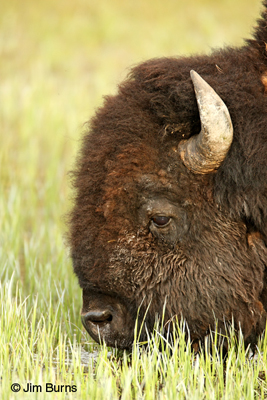
This past summer we went through Burns, Oregon before Burns (no relation) became a headline, driving through Malheur, exploring Steens Mountain, awed by our first immersion in the variety of wildlife and the wild country that is the southeast Oregon desert. Now a friend has loaned me a book that connects the dots between the cattle culture of the northern plains and the suicide-by-cop of LaVoy Finicum in Oregon’s high desert this winter. If you’re a birder, you’re a nature lover, and if you’re a nature lover, Dan O’Brien’s book, Buffalo for the Broken Heart, is a must read.
Dan O’Brien grew up in northwestern Ohio amidst tire factories, big trees, and rich farmland but, a romantic like most birders and nature lovers, he fell hard as a kid on a camping trip for the endless skies and open spaces of South Dakota’s Black Hills. Though trained in literature and wildlife ecology, he followed his heart for twenty years trying to wrest life and a living from a small cattle ranch he had purchased in the western prairie land he had come to love.
The book especially resonated with me because my best friend in college and I drank many a beer over weekends speculating how we could make a living in the American West with which we also had fallen in love. I can tell you the idea of cattle ranching came up, but I can’t tell you how ludicrously ill qualified we would have been for such an endeavor. When O’Brien bought his ranch, he was only slightly more qualified but immeasurably less risk averse than my friend and I. And, like my friend, O’Brien’s move out west would eventually cost him his marriage.
The story of how he was slowly broken by the unrelenting climate of the northern plains and the informative but calamitous history of White Man’s futile attempt to tame it with cattle makes for compelling reading. It is equal parts personal diary, history of the American West, and celebration of the evolutionary cycles of nature. O’Brien’s epiphany is the realization that the key to both his own emotional resurrection and the revival of his land is converting from cattle back to buffalo, the latter so perfectly evolved to keep on turning the wheel of life on the Great Plains.
Like any rancher/survivor of the Great Plains O’Brien is many things, but he is primarily a keen observer and joyful surveyor of both the human soul and the prairie between his fences. He is a falconer who flies Peregrines, he is an historian who has researched all those who came before him on his land, he is a caring human who must console his closest rural neighbor upon the suicide of that neighbor’s son, and he is a wonderful nature writer who waxes poetic watching nighthawks over his stock ponds or discovering a White-crowned Sparrow, the northern plains first bird of spring.
Here, in his own words, is O’Brien’s epiphany as he watches one of his buffalo create a wallow—“It is . . . to the mind of someone fascinated by the evolutionary role of animal behavior in an ecosystem, ripe with possible interpretation. I was coming to believe . . . (the buffalo) was the missing component, the absence of which creates the snag that unravels the tapestry . . . this wallowing meshes one of this land’s great shortcomings, lack of water, with the buffalo’s unique abilities to find water and to bring it to the surface. Consider that cattle had allowed the old buffalo wallows to seal over and so deprived all the other species . . . in an otherwise arid land.”
If you are a birder, if you enjoy nature, if you love the American West, if the armed and illegal occupation of Malheur this past winter made you cringe, you must read Dan O’Brien’s Buffalo for the Broken Heart. As with all great nature writing, you won’t be able to put it down.